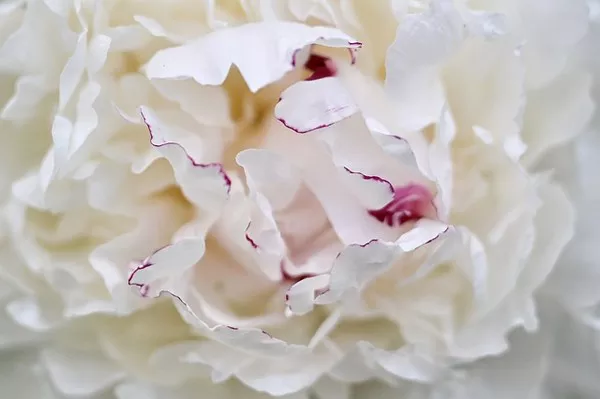The enchanting process of watching flowers bloom is a timeless fascination for nature enthusiasts and gardening aficionados alike. While the beauty of a flower in full bloom is undoubtedly captivating, the journey from bud to blossom is a complex and intricate process. Understanding the factors that influence the time it takes for flowers to bloom can enhance our appreciation for the wonders of nature and empower gardeners to cultivate their blooms with patience and precision.
The Flowering Process:
The journey of a flower from a tiny bud to a fully bloomed marvel involves a series of meticulously orchestrated stages. This process, known as flowering, is governed by a combination of genetic, environmental, and physiological factors. Each type of flower has its unique characteristics, and therefore, the duration of the flowering process can vary significantly.
Genetic Factors:
Genetic factors play a pivotal role in determining how long it takes for flowers to bloom. The genetic makeup of a plant dictates its growth pattern, flowering time, and overall development. Different species and even varieties within a species may exhibit distinct flowering timelines.
Some flowers are classified as annuals, completing their entire life cycle within a single growing season. Examples include marigolds and zinnias. Annuals often have a relatively short timeframe for blooming, ranging from a few weeks to a few months, depending on the specific species.
On the other hand, perennial flowers, such as roses and tulips, have a longer lifespan, persisting for multiple growing seasons. Perennials may have a more extended flowering period, with some blooming for weeks or even months at a time. The genetic predisposition of a flower, therefore, sets the stage for the duration of its blooming phase.
Environmental Influences:
Environmental factors play a crucial role in influencing the rate at which flowers bloom. Light, temperature, humidity, and soil conditions collectively create the environment in which a plant thrives. These factors can either expedite or delay the flowering process.
Light is a primary environmental factor that impacts flowering. Photoperiod-sensitive plants, such as poinsettias, respond to changes in day length, triggering the initiation of flowering. For these plants, exposure to specific daylengths or periods of darkness is essential for the onset of blooming.
Temperature is another critical environmental factor that significantly influences the flowering process. Some plants require a period of cold temperatures, known as vernalization, to stimulate flowering. Conversely, warmth-loving plants may exhibit delayed blooming if exposed to chilling conditions.
Soil conditions, including nutrient levels and moisture content, also play a role in flower development. Adequate nutrition supports robust plant growth, leading to healthy and vibrant blooms. Insufficient nutrients or imbalanced soil conditions can impede the flowering process and result in stunted or delayed blossoms.
Physiological Factors:
The physiological processes within a plant contribute to the timeline of flowering. The transition from vegetative growth to reproductive development is a pivotal phase that marks the onset of flowering. This transition is regulated by hormonal signals within the plant.
One key hormone involved in flowering is gibberellin. Gibberellins promote stem elongation and flowering in response to environmental cues. The interaction between gibberellins and other hormones, such as auxins and cytokinins, orchestrates the complex series of events leading to the formation of flower buds and subsequent blooming.
Understanding the interplay of these physiological factors provides insight into why certain flowers may take longer to bloom than others. Additionally, the health and vigor of a plant, influenced by factors like disease resistance and overall vitality, contribute to the efficiency of the flowering process.
Cultivation Practices and Techniques:
For gardeners and horticulturists, employing effective cultivation practices can influence the speed at which flowers bloom. Proper care, including watering, pruning, and fertilizing, enhances the overall health of plants and supports timely and abundant flowering.
Watering practices, in particular, play a crucial role in flower development. Insufficient water can lead to stress, affecting the plant’s ability to produce flowers. Conversely, overwatering can result in root rot and other issues that hinder flowering. Striking the right balance and providing consistent moisture is essential for optimal blooming.
Pruning is another cultivation technique that can impact the timing and abundance of flowers. Removing dead or spent blooms, a practice known as deadheading, encourages the plant to redirect energy towards new flower production. Additionally, strategic pruning can shape the plant and promote a more compact form, enhancing the visual appeal of the blooms.
Fertilization is a key aspect of flower cultivation. Providing the necessary nutrients, such as nitrogen, phosphorus, and potassium, supports healthy growth and flowering. Understanding the specific nutritional needs of different flowers enables gardeners to tailor their fertilization practices for optimal results.
See also What Flowers Like Full Shade? All You Need to Know
Conclusion:
In the world of flowers, the journey from bud to blossom is a captivating spectacle that unfolds through a combination of genetic, environmental, and physiological factors. The diversity of plant species ensures a wide range of blooming timelines, from the fleeting beauty of annuals to the enduring charm of perennials. Gardeners and nature enthusiasts alike can deepen their appreciation for the flowering process by considering these intricate factors and implementing effective cultivation practices. By understanding the mechanisms at play, we can foster an environment that nurtures and celebrates the timeless beauty of blooming flowers.


